Check out these amazing hotel deals!
- Save up to 30% on your hotel in Hawaii!
- Last-minute holiday hotel deals
- Top hotel deals for a new year trip
- Visiting Paris? Find the Best Deals & Reviews at TripAdvisor.
- Save 30% on hotels in Ocean City, Maryland...a TripAdvisor Top 10 Summer Destination!
- Save up to 30% on your hotel on your Winter Vacation!
- Find top-rated hotels at the lowest prices on TripAdvisor. Check rates now!
- Save up to 30% on hotels for a romantic getaway!!
Europe, the Old Continent, has a heritage of inestimable value, including natural parks, cities of art, palaces, and museums. In every country, in every city, there are findings from past eras, wonderful monuments that must be seen at least once in a lifetime. From the treasures left by the ancient Greeks and Romans to the palaces that combine different architectural styles, demonstrating the multiculturalism of certain areas, to world-renowned museums.
In short, a lifetime wouldn’t be enough to discover the entire Old Continent, but we can make a to-do list with its essential monuments. So, here are the 20 most famous and visited monuments in Europe.
| Monument | Location | N ° Visitors/year |
| Alcazar | Seville | 1,875,744 |
| Great Mosque of Cordoba | Cordoba | 1,953,133 |
| Topkapı Palace | Istanbul | 2,000,000 |
| Auschwitz and Birkenau | Oswiecim | 2,053,000 |
| Lazienki Palace | Warsaw | 2,100,000 |
| Edinburgh Castle | Edinburgh | 2,111,578 |
| Kremlin | Moscow | 2,478,622 |
| City of Arts and Sciences | Valencia | 2,637,567 |
| Alhambra | Granada | 2,760,000 |
| Tower of London | London | 2,858,336 |
| Schönbrunn Palace | Vienna | 3,050,000 |
| Wilanów Palace | Warsaw | 3,098,985 |
| Orsay Museum | Paris | 3,300,000 |
| Excavations of Pompeii | Pompeii | 3,646,585 |
| Tsarskoe Selo | St.Pietroburgo | 3,694,000 |
| Peterhof Palace | St.Pietroburgo | 5,245,900 |
| Eiffel Tower | Paris | 7,000,000 |
| Parthenon | Athens | 7,200,000 |
| Colosseum | Rome | 7,650,519 |
| Palace of Versailles | Versailles | 8,100,000 |
20. Alcazar, Seville (Spain)
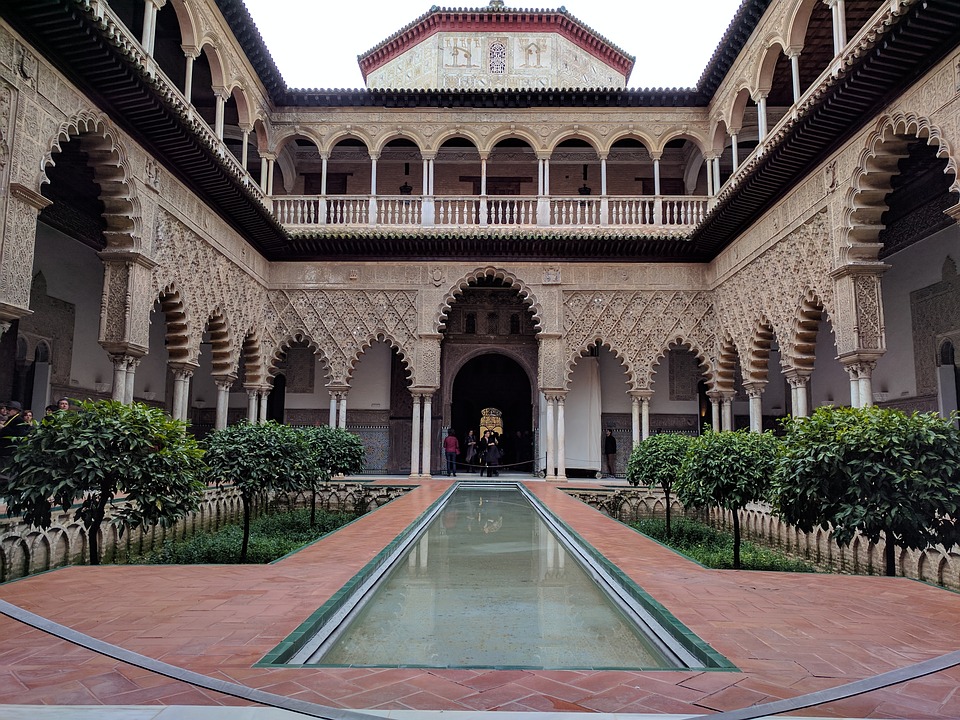
The Real Alcazar is one of the oldest buildings in the world and is still used by the King of Spain today! It is the symbol of the multiculturalism of Andalusia, a land that has seen different people pass through, who have left an important imprint of their culture. This is visible in the architecture of the Palace, a mix of the west and the east.
Built around the 14th century, over the centuries it has been continuously modified and expanded by the various owners who followed one after another, thus making it unique in the world. To enter you will cross the imposing Patio del Leon and then continue to the Salon del Almirante, where all expeditions to the New World were scheduled. Don’t forget the apartments of Peter I and the Patio de las Doncellas, an example of Arab-Andalusian art.
19. Great Mosque of Cordoba, Cordoba (Spain)
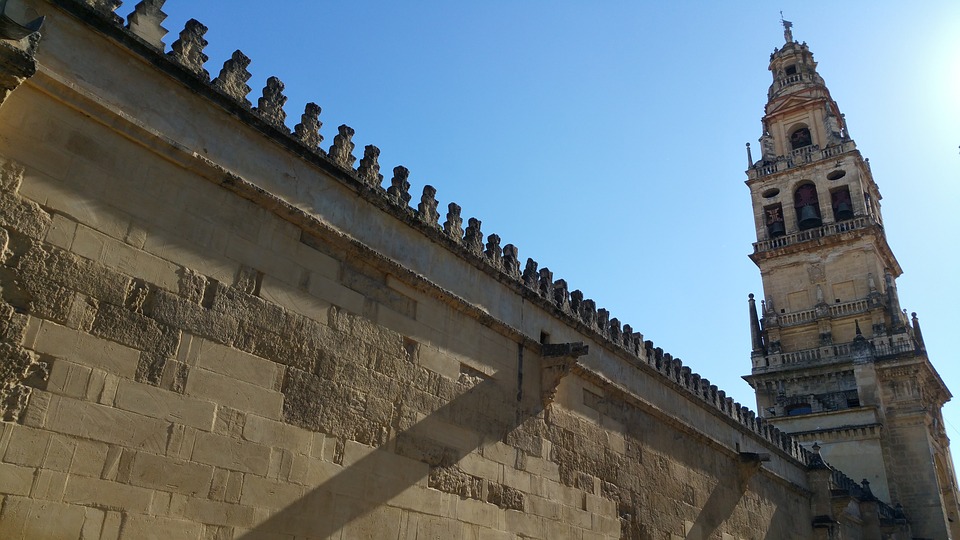
Still in Spain, now we look at the Great Mosque of Cordoba, one of the most famous monuments in the world. This wonderful monument shows, with all its beauty, the fusion of the different cultures that have followed one another in this region. Today it’s the Cathedral of the Immaculate Conception of the Most Holy Mary, and it’s still the center of the spiritual life of the locals.
This cathedral is truly unique in the world, starting with the architecture. Here you can admire Islamic, Hellenistic, Roman, Byzantine, and Christian influence all in one building. Truly very large, the things to see are different, including the Main Chapel, the Mihrab, the Parish of Sagrario, the archaeological site of San Vincenzo, and the Patio of Aranci. Don’t forget to visit the Campanile, the real symbol of the city.
18. Topkapi Palace, Istanbul (Turkey)

This beautiful palace complex in Istanbul, Turkey was the home of the sultan and administrative power during the Ottoman Empire. In fact, it was the residence of 24 sultans out of 36 in total. In English, the name of the building is “The Cannonball Gate” and was built in 1400 and completed in 1478.
Today, only a small part of this extensive complex can be visited. Among the things that can be seen are the Court of the Janissaries (in which fountain the swords were cleaned after the executions), the Court of Ceremonies (the place where state matters were discussed), the Harem (in which only the women of the palace were admitted) and the kitchens (thousands of people worked here). Definitely, a must-visit to understand how life went on in this real citadel.
17. Auschwitz and Birkenau, Oswiecim (Poland)
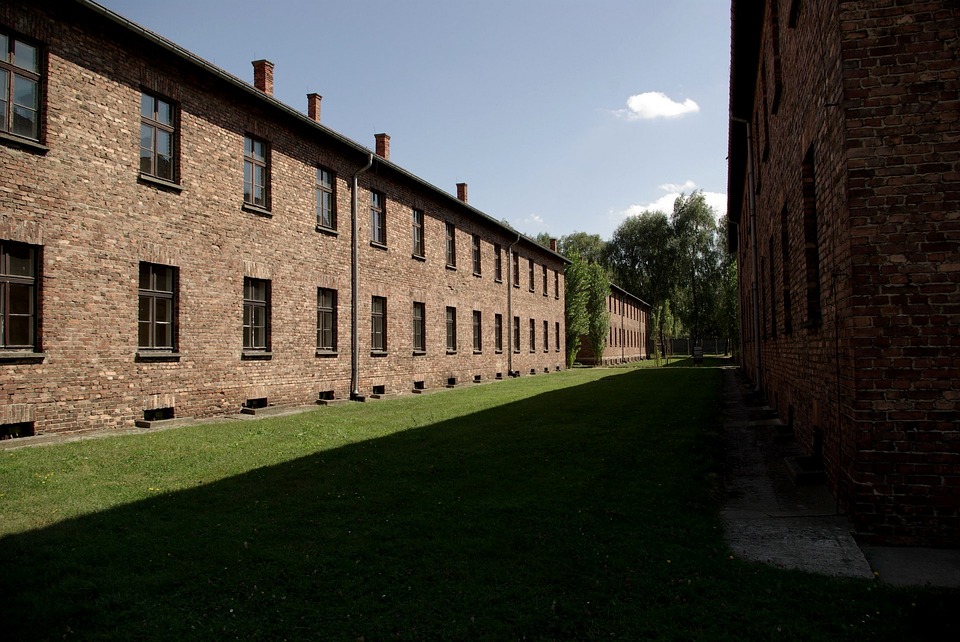
Let us go to Poland, to discover one of the blackest pages in European history. In the small village of Oswiecim, about 70 kilometers from Krakow, Poland, is the Auschwitz and Birkenau Memorial. What today is a memorial and a museum, was a terrible concentration and labor camp and the largest Nazi extermination center during the Second World War. Visiting it is essential not only to know but most of all not to forget!
The memorial is divided into two different parts – Auschwitz I and Auschwitz II (Birkenau). Auschwitz I was the core from which the whole field later developed. This is where Polish political prisoners were initially brought after the invasion of Germany. Over time, it expanded, creating a real satellite complex, with Auschwitz I remaining the base core. Today, here you can pass under the famous sign ” Arbeit Macht Frei ” and visit some blocks that have been converted into museum rooms. Auschwitz II (Birkenau) was built later and today is as it once was; with the long central track and the remains of the barracks and crematoria.
16. Lazienki Palace, Warsaw (Poland)
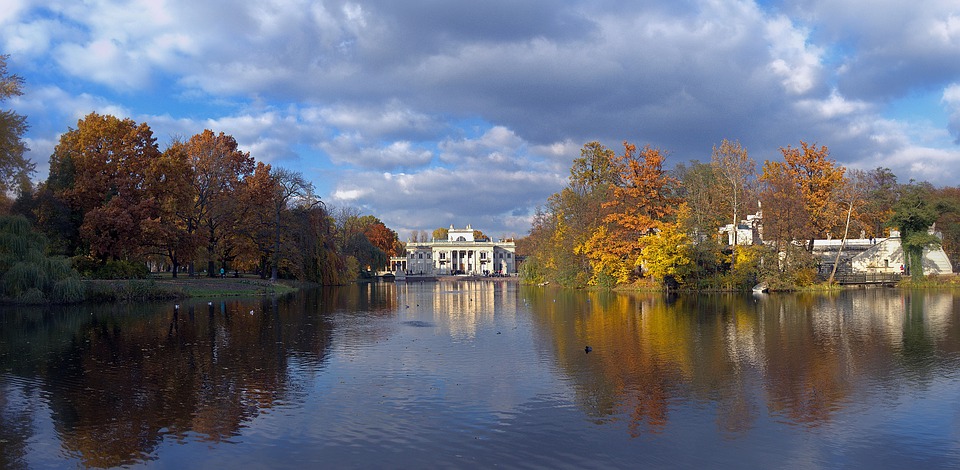
Still in Poland, we look at the famous Lazienki Palace, also called the Palace on the Water, located in Warsaw. The complex consists of several palaces and an immense garden, which together make one of the most beautiful planned areas in Europe and one of Poland’s most popular attractions. It was built at the behest of the Polish king Stanislao Augusto Poniatowski in the 18th century.
The palace is located in the wonderful Lazienki Park complex, which covers over 76 hectares and includes other points of interest. After visiting the palace, we recommend you enjoy a walk in the park and admire the Theater on the Island, the White House, the Old Orangery, the Myślewicki Palace, the Temple of Diana, and much more.
15. Edinburgh Castle (Scotland)
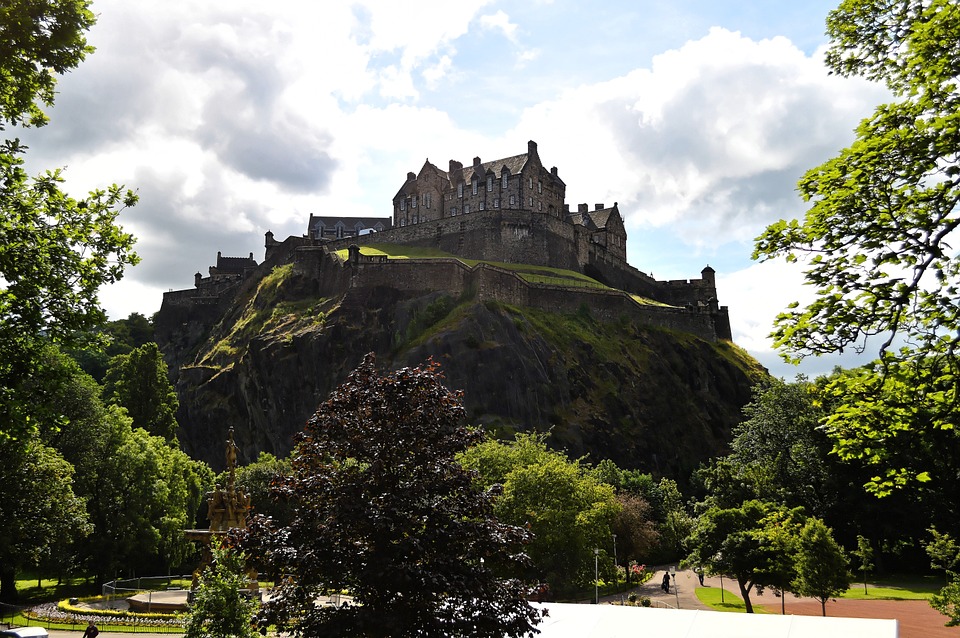
In Scotland, more precisely in Edinburgh, you can’t miss the castle – one of the most famous places in the city and the most visited attraction in Scotland. It’s located on the top of Castle Hill, from where you can admire a beautiful panorama. It seems that the castle has very ancient origins as the first settlements here date back to 900 BC
It is really very large, so if you want to visit the entire castle, we suggest you take at least half a day. Here are some of the main areas and attractions of this castle you must see. We’ll start with the most famous cannon, One O’Clock Gun, which fires a shot at one o’clock. So, make sure you are near the castle at that time. Then, there’s are the Chapel of San Margherita, the Scottish National War Museum, the Crown Jewels, and the Prisons of War.
14. Kremlin, Moscow (Russia)
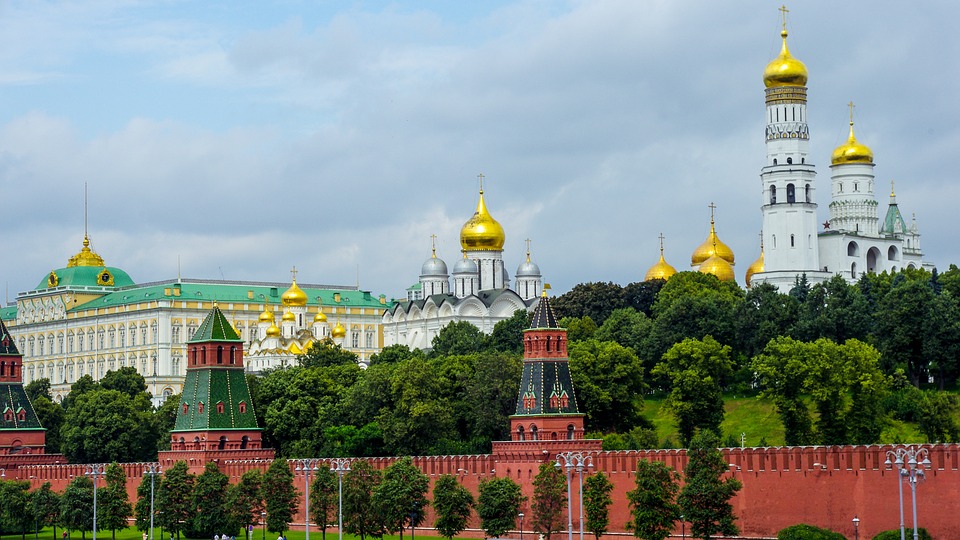
Located in Russia, this fortified citadel in the heart of Moscow is one of the most visited attractions and the most important monument of the city. Built in the Middle Ages (the first dates date back to 1147), it became the residence of the Russian princes in 1264. Today one part of this citadel, the Grand Palace, is the official residence of the President of the Russian Federation; therefore, it’s not open to visitors.
Over the centuries, what once was the original Kremlin, has been expanded to include more and more buildings. No wonder it takes a whole day to visit the whole complex. Here you can visit the Armory Palace, the Patriarch Palace, three Cathedrals (Cathedral of the Dormition, Cathedral of the Archangel Michael, and Cathedral of the Annunciation), the Church of the Deposition of the Robe, the Church of the Twelve Apostles, and the Bell Tower by Ivan the Great. With so many different attractions, each with different visiting times and entrance costs, it’s better to plan your visit in advance.
13. City of Arts and Sciences, Valencia (Spain)
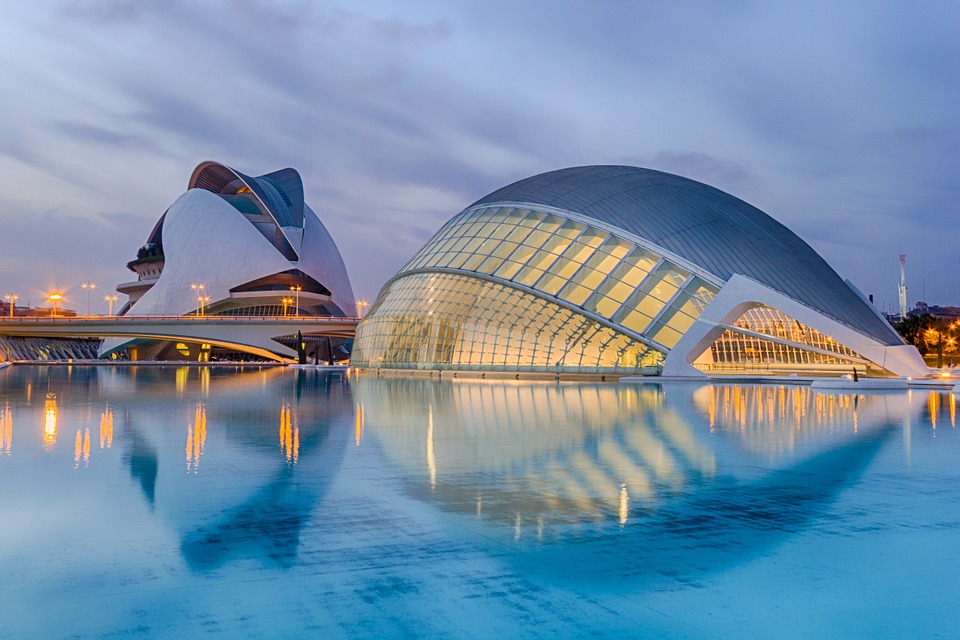
In Valencia, you can visit the very famous City of Arts and Sciences – a real technological and architectural masterpiece. Built based on the project of the Valencian architect Calatrava and opened in 1998, this city covers around 2 kilometers on the old bed of the Turia river.
We recommend you to take a full day to explore this place far and wide! This real city within the city is made up of 5 different structures, divided into 3 thematic areas: nature, science, and art. Each building has its own duty and holds a specific collection. Namely, El Palau de les Arts Reina Sofía was built for the performing arts, the Hemisferic for the planetarium, El Museo de les Ciencies Principe Felipe is the museum of applied science, the Oceanografic (aquarium), and the Agora (where different events and demonstrations are hosted).
12. Alhambra, Granada (Spain)
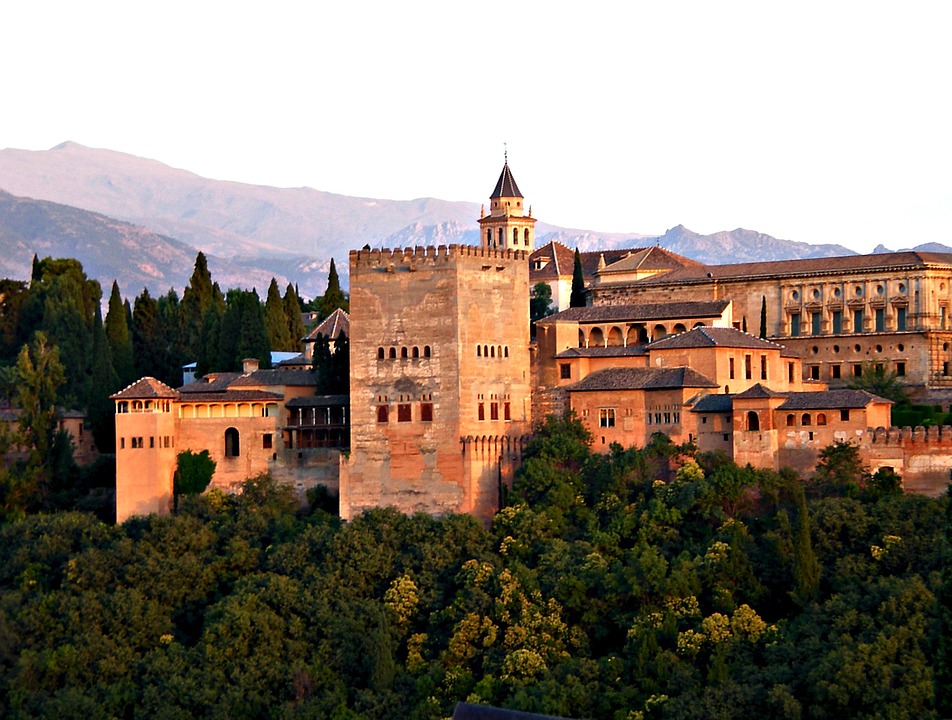
This is a complex of Andalusian UNESCO World Heritage buildings. Considered by many to be one of the most magical places in the country, this complex was first mentioned in documents from the 9th century, when it was still a military fortress. Over the centuries and the dynasties, it became the Royal Residence.
There are so many things to see and visit that it takes almost a whole day. The complex is divided into three parts: Generalife Palace, Alcazaba, and Nasrid Palaces. We advise you to organize your visit based on the entrance to the Nasrid Palaces since you can enter this place only at the time given on the ticket; hence, if you arrive late, you will be denied access. The Generalife was the summer residence and is full of beautiful gardens that will take you back to the temple. Finally, the Alcazaba is the defensive stronghold.
11. Tower of London, London (England)
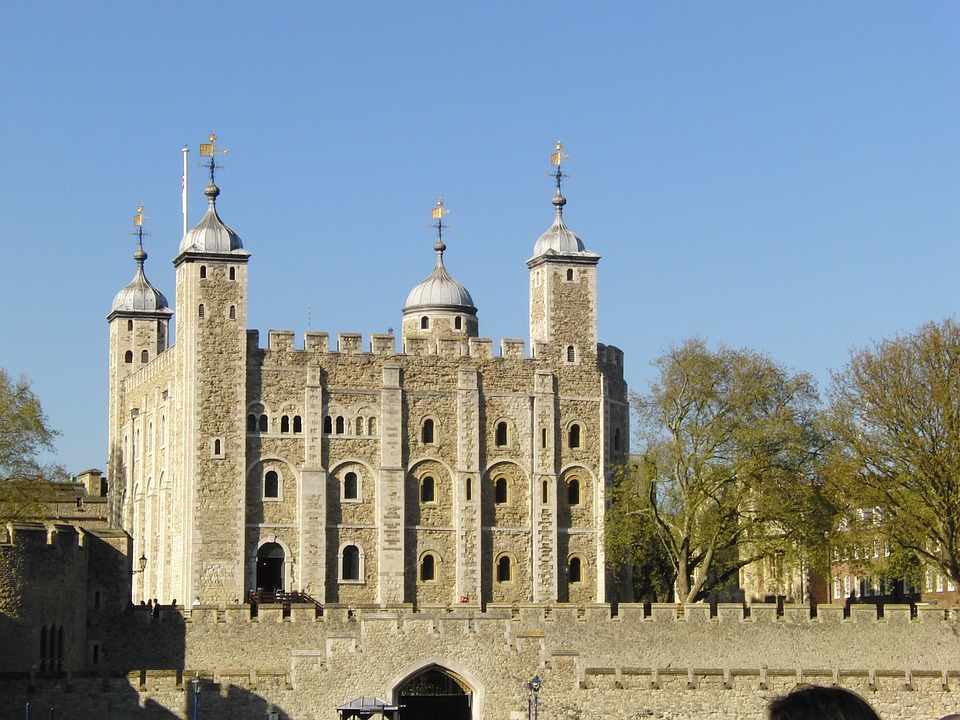
Now, we go to England, more precisely to its capital, London. One of the most loved and visited monuments here is this medieval fortress located in the heart of the city, on the north bank of the Thames. The Tower of London is the most beautiful in all of England and is about 1.000 years old. It was built at the behest of William the Conqueror between 1066 and 1087 but was completed in 1307 with Edward I.
This is not a single building, rather a complex that includes several palaces, with towers, prisons, houses, chapels, and even museums. What makes this monument so famous is the fact that the crown jewels, a priceless treasure, are kept here. Supervised 24 hours a day by the Major of the Town, there are also some unlikely watchers – a community of ravens that have lived in the tower since who knows when. Actually, there is a legend about them. It is said that if they all go, the Monarchy and the United Kingdom would disappear.
10. Schonbrunn Palace, Vienna (Austria)
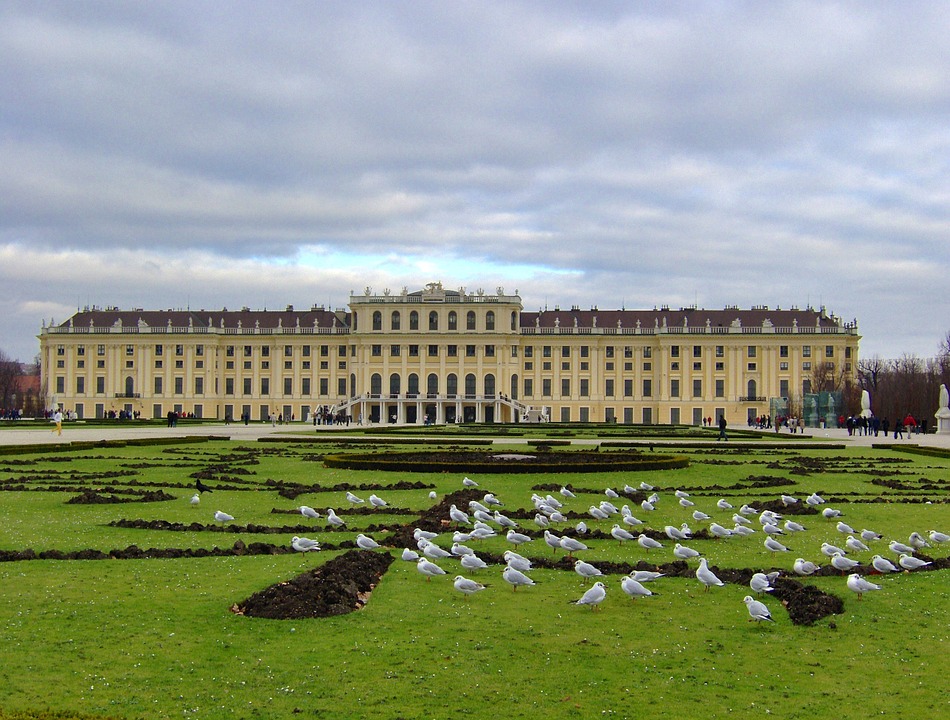
In the heart of the ancient Austro-Hungarian Empire, in Vienna, is this famous Schonbrunn Palace. This imperial palace served as a summer residence of the Habsburgs.
To be able to visit, both, the palace and the gardens we advise you to take at least half a day. Inside the palace follow the path indicated in the audio guide (included in the admission price) and visit the Rococo-style halls and the private rooms of Emperor Franz Joseph and Empress Isabella. You can also see the Grand Gallery of Imperial Banquets, the Circular Chinese Hall, and the Blue Chinese Hall. Then, enjoy a walk in the beautiful gardens, where you can also find the Tiergarten, the Vienna Zoo, the oldest zoo in the world, and the Imperial Carriage Museum.
9. Wilanov Palace, Warsaw (Poland)
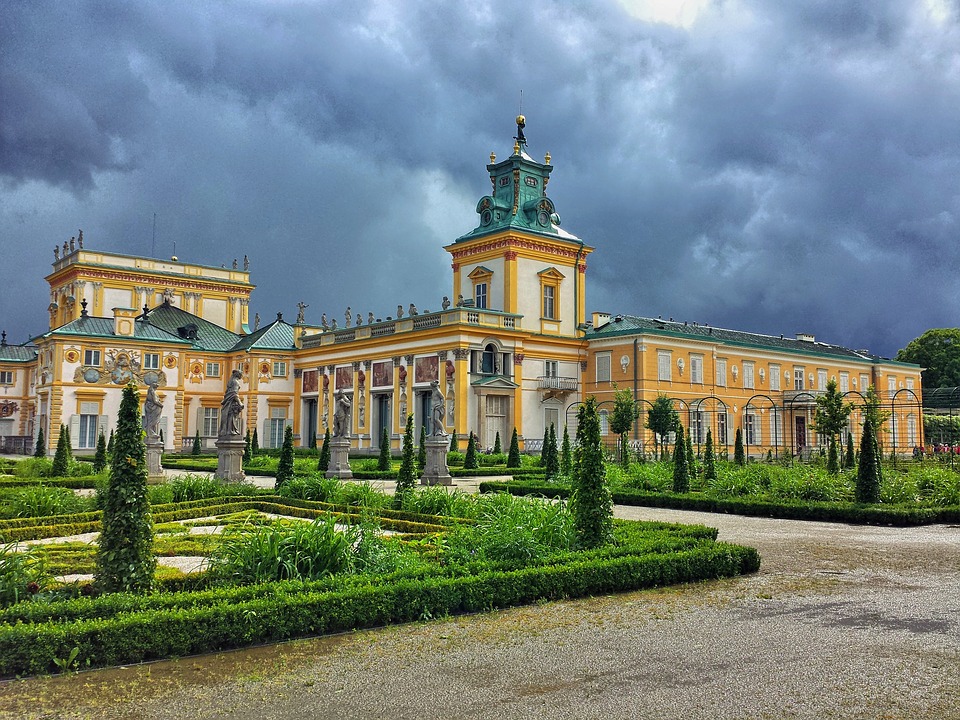
This is one of the most beautiful buildings in all of Poland, protected by the state by ad hoc laws. Due to its beauty, it is also called the Little Versailles. It was built during the 17th century at the behest of King Jan III Sobieski and was later renovated and enlarged by subsequent owners.
Its interiors are truly admirable due to being unique as a result of the mix of different cultures, with a Chinese, Polish, Italian, and English design. The Palace is surrounded by immense gardens, where there is also a botanical garden and the royal garden of light. In the summer, numerous events are held there and it becomes a real meeting point for locals and tourists.
8. Musée d’Orsay, Paris (France)
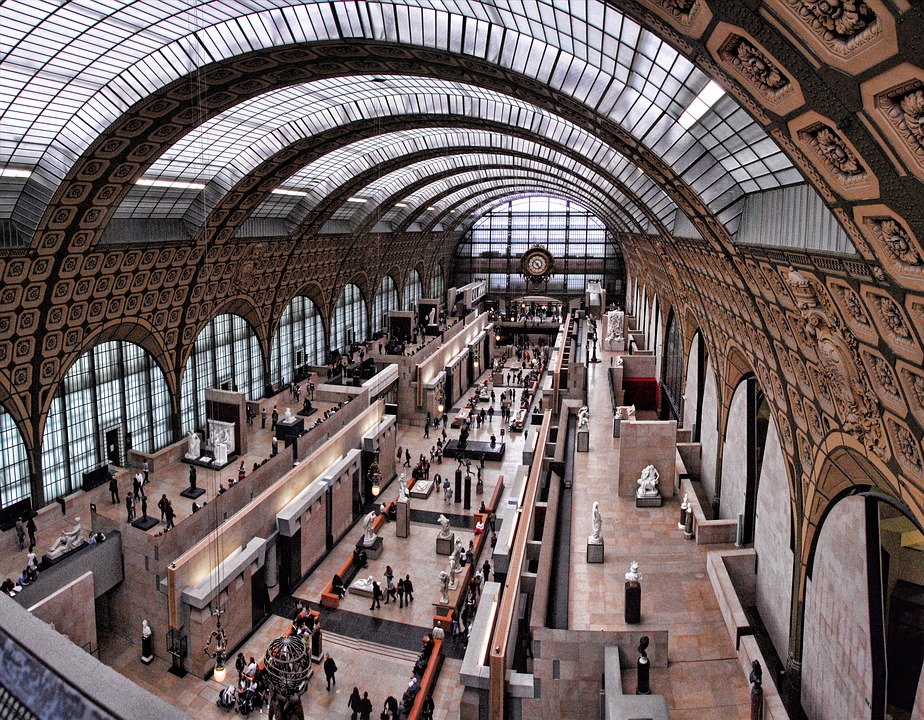
This Parisian museum is already striking with its location. It’s located in a former railway station, which is characterized by the eclectic style of the late 19th century. After being used for different purposes, the station has housed the museum since December 1, 1986, the same day it was opened to the public.
It is known for its immense collection of impressionist and post-impressionist works. Among the authors, you can find celebrities of the caliber of Van Gogh, Monet, Cezanne, and Renoir. The collection is so large that you will have to devote at least a few hours to the museum, so visiting it in the morning would be perfect.
7. Pompeii Еxcavations (Italy)
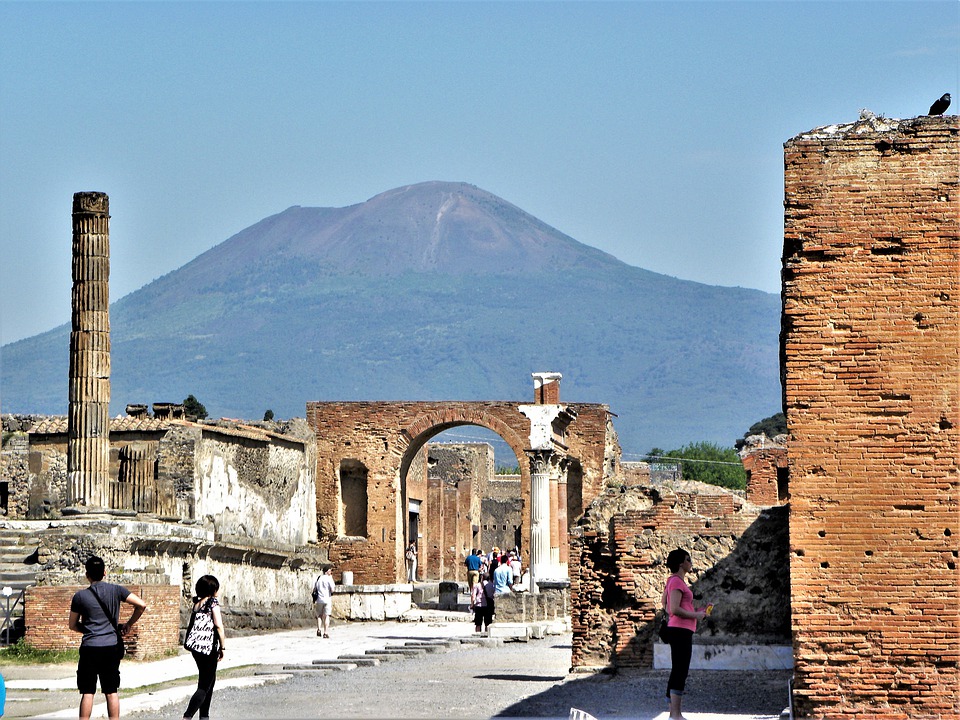
These are the remains of the ancient city of Pompeii, brought to light thanks to long recovery works, which began in the distant 1748 at the behest of Carlo Borbone. The city is one of the best-preserved in the world due to the tragic event that struck it – when Vesuvius erupted in 79 AD, completely covering the city. The dust and the ashes have preserved the remains in an almost impeccable way.
To visit the ruins of Pompeii, we suggest you take a whole day since the site is very large and there are so many things to see. We also suggest you to tickets with priority entrance online, to avoid long queues. Here you can admire the ancient Amphitheater, the Forum, the Temple of Jupiter and the Temple of Apollo, the Great Theater, and the Villa of the Mysteries.
6. Tsarskoe Selo, Saint Petersburg (Russia)
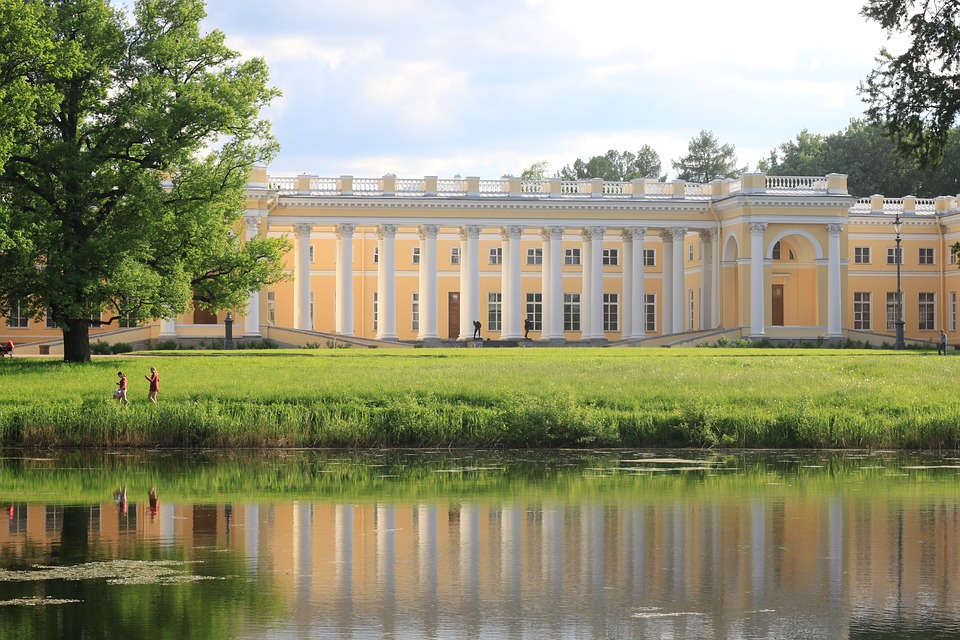
St. Petersburg, a wonderful city overlooking the Baltic Sea, is home to the wonderful Catherine Palace, the imperial residence of the tsars built at the behest of Empress Catherine I, wife of Peter the Great. The works began in 1717 and later in 1722 began the works for the wonderful park. The palace and park are part of the Tsarskoe Selo reserve, one of the most beautiful monuments of world landscape art.
This complex has been declared a UNESCO World Heritage Site and is an obligatory stop on a trip to St. Petersburg. One of the strengths of the building, which is a must-see, is the Amber Room, an incredible room of the tsar with walls covered with panels made of thousands of amber splinters. What you can see today is unfortunately a copy, as the real room was dismantled by the Nazis during the Second World War.
5. Peterhof Palace, Saint Petersburg (Russia)
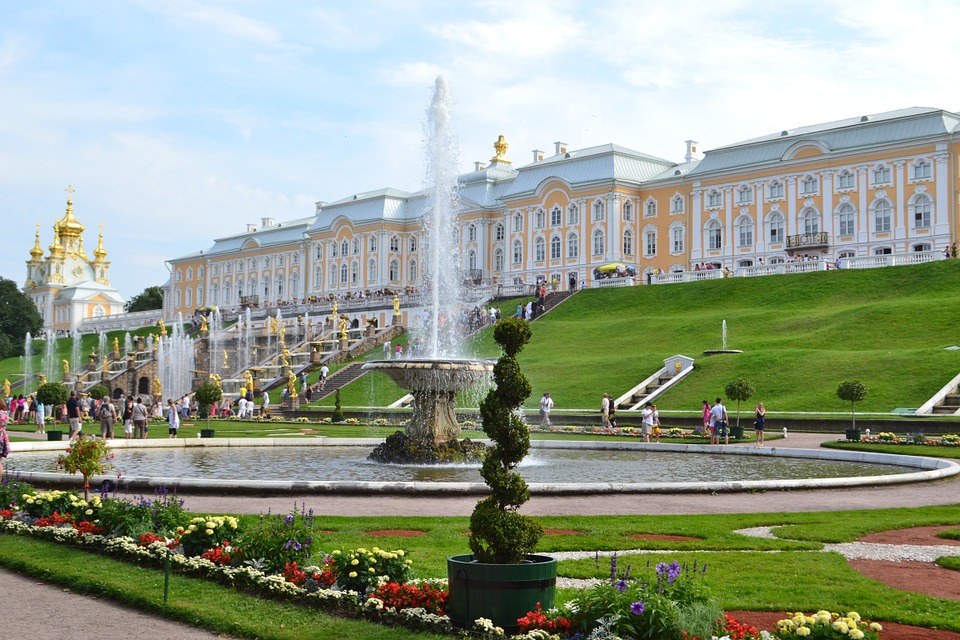
Wonder what to see ono your trip to St. Petersburg? This is one of the must-visit places! Declared a UNESCO World Heritage Site, this immense palace is also called the Russian Versailles and was the residence of the tsars until 1917. If the Tsarskoe Selo was created at the behest of Catherine I, the Peterhof was built on the orders of Peter the Great, her husband. After the Russian Revolution of 1917, the palace was transformed into a museum but was destroyed by the Nazis during the Second World War and the renovations and recoveries continue today.
But what to see in this immense complex of palaces and gardens? The heart of the complex is the Grand Palace, which was the real summer residence of the tsars. All around it, you can find several smaller palaces, churches, and museums, such as the Marly Palace, the Cottage Palace, Church Wing, and many others. Furthermore, the marvelous gardens, which are divided into Parco Superiore and Parco Inferiore, are absolutely worth a visit. In the latter, there is the largest complex of fountains in the world!
4. Eiffel Tower, Paris (France)
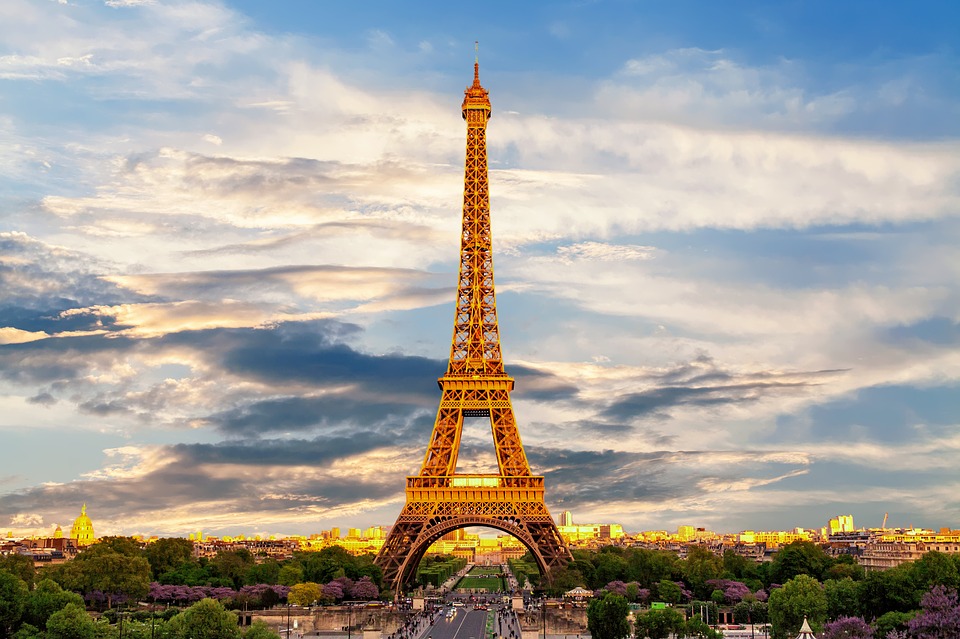
It’s undoubtedly the most famous monument and the symbol of France. This 300 meters high tower was built in just two years, completed in 1887, for the Universal Exposition. The intention was to destroy it after the event, as it actually wasn’t well accepted by the Parisians and the aristocratic elite at the beginning. But, over the years, it became a real symbol of the city and today it’s an essential stop point on a trip to Paris.
You need to know that there are several tickets to access the Eiffel Tower, depending on which observatory you want to reach and whether you want to use the elevator or not. It is divided into 3 different floors with the first floor at 57 meters height, the second floor at 115 meters, and the third floor, the top of the tower, at a 276 meters height. If you want to enjoy a wonderful view, the second floor is the right one.
3. Parthenon, Athens (Greece)
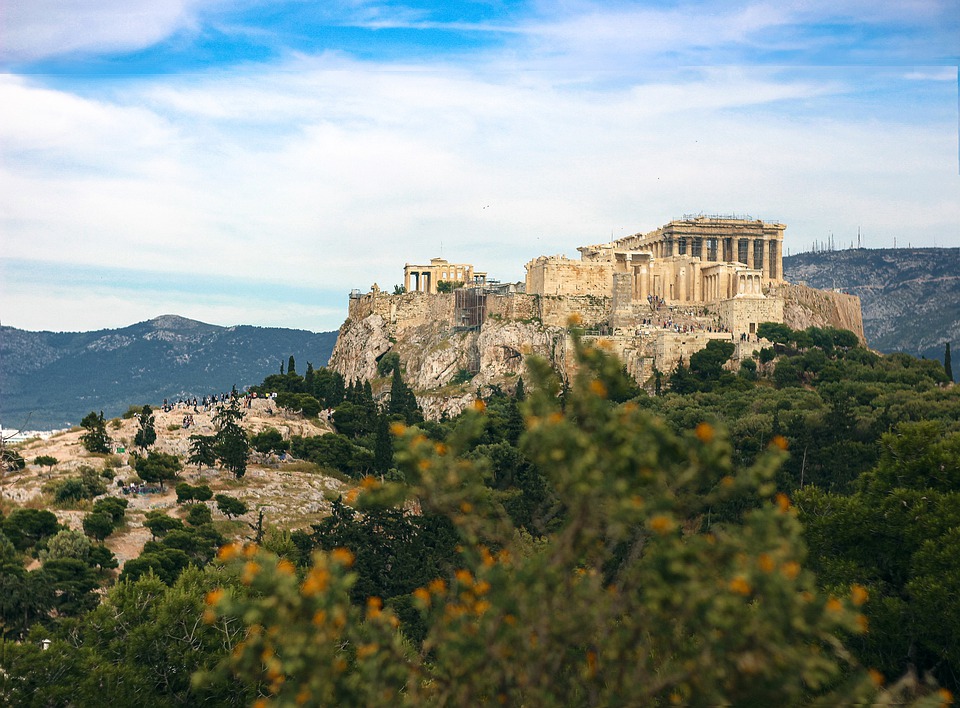
We enter the top 3 and move to Greece, more precisely in its capital, Athens, the heart of Ancient Greece. Here you can visit unique monuments. One of them is the ancient Greek temple, Parthenon, the symbol of Athens and the most important building on the Acropolis. Its reconstruction dates back to 447 BC and is mainly in the Doric style. During the following centuries and under different cultures, the temple became a Christian church, a Muslim mosque, during the Ottoman Empire, and a warehouse for ammunition and weapons.
In the heart of the Acropolis, or the ancient upper city of Athens, where the main worship places were concentrated, the Parthenon is a must-visit. Although it is always undergoing restorations to try to preserve the numerous damages which happened over the years, you will be left speechless in front of its greatness.
2. Colosseum, Rome (Italy)
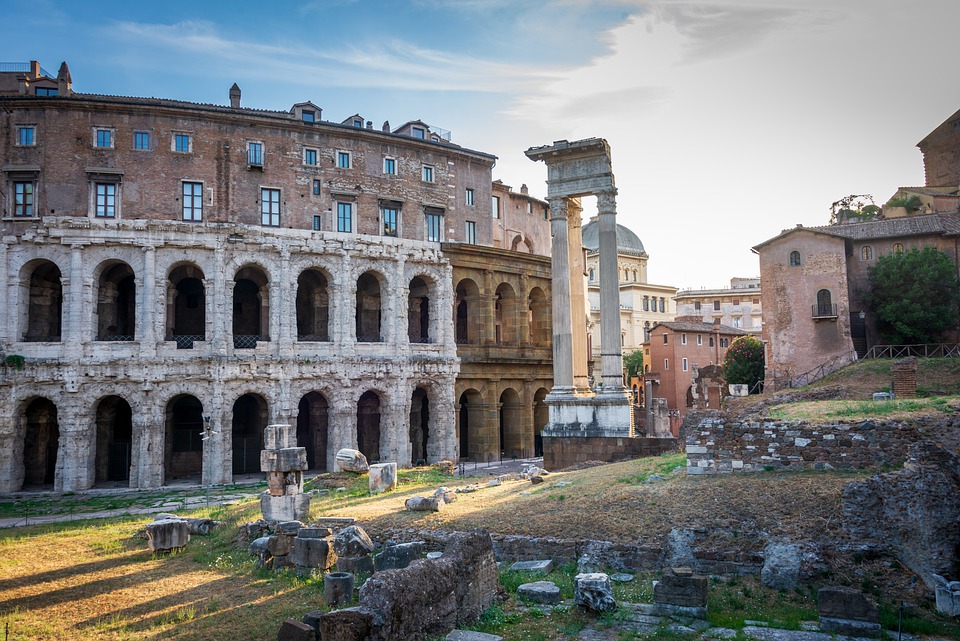
It is the most visited Italian monument and, now, a symbol in the world! Its construction began during the Vespasian Empire, in 69 AD, and took about 10 years to complete. It was purposely built over the remains of Nero’s residence, to return to the Roman people and the Empire what Nero had taken and stolen. It was inaugurated in 80 AD with several days of celebration.
It is the largest amphitheater in the world and is located right in the heart of Rome. This was the place where the Romans, from regular citizens to senators, and up to the emperor entertained themselves. The richest sat lower down near the arena and the commoners sat higher. According to a reconstruction, the amphitheater could contain between 50.000 and 80.000 people. Unfortunately, today, the interior is mostly collapsed, yet it’s absolutely worth a visit. It is one of those monuments to see at least once in a lifetime.
1. Palace of Versailles, Versailles (France)
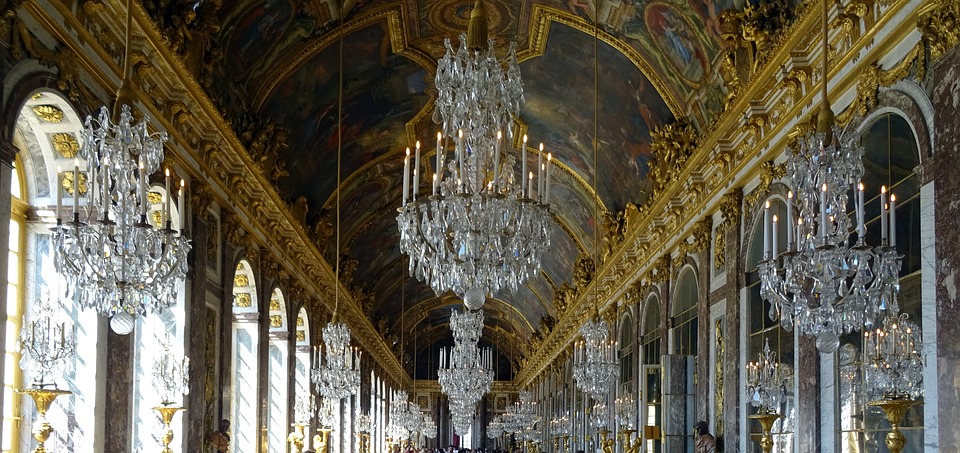
In the first place, we find the most visited European monument, the Palace of Versailles, located about 20 km from Paris. It is an ancient and majestic royal residence of the Bourbons of France, built at the behest of Louis XIV (known as the Sun King), who wanted to get away from Paris and the people. And so, it remained the official home of three emperors: after Louis XIV, Louis XV and Louis XVI also moved their residence and power to Versailles.
Today, the palace is one of the must-see monuments at least once in your life. Its beauty and majesty are undeniable to the point that several palaces around the world were built inspired by it. To visit this palace, you must dedicate at least an entire day. Some of the things you absolutely have to see are the famous Gallery of Mirrors, where the Treaty of Versailles was signed at the end of the First World War in June 1919, and the wonderful park, which you should see entirely.
Check out these amazing hotel deals!
- Save up to 30% on your hotel in Hawaii!
- Last-minute holiday hotel deals
- Top hotel deals for a new year trip
- Visiting Paris? Find the Best Deals & Reviews at TripAdvisor.
- Save 30% on hotels in Ocean City, Maryland...a TripAdvisor Top 10 Summer Destination!
- Save up to 30% on your hotel on your Winter Vacation!
- Find top-rated hotels at the lowest prices on TripAdvisor. Check rates now!
- Save up to 30% on hotels for a romantic getaway!!
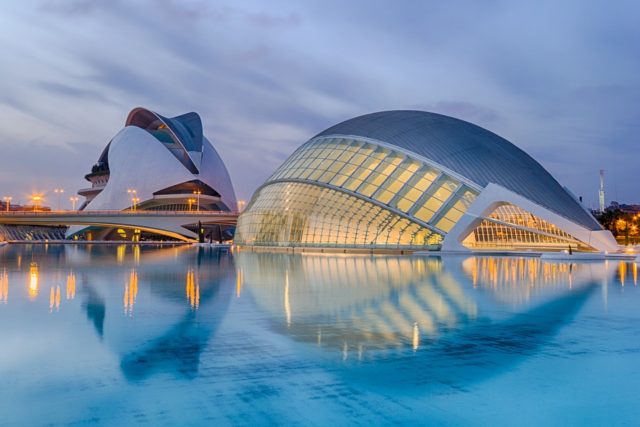





Find Us on Socials